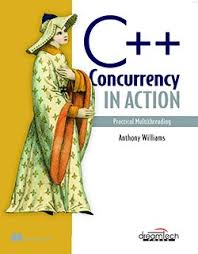Expanding the White Paper: A Comprehensive Guide to C++ Concurrency
Introduction
C++ has evolved significantly over the years, incorporating powerful features to address the challenges of modern software development. Concurrency is one such area where C++ has made significant strides, providing developers with a robust and efficient mechanism for writing multithreaded applications.
This white paper will delve into the world of C++ concurrency, exploring the core concepts, best practices, and advanced techniques that enable developers to harness the power of multithreading in their applications.
Core Concepts of C++ Concurrency
- Threads: The fundamental unit of execution in a C++ application. Threads share the same address space but have their own stack and execution context.
- Synchronization: Mechanisms to coordinate the access of multiple threads to shared resources, preventing race conditions and ensuring data integrity.
- Atomic Operations: Operations that are guaranteed to execute as a single, indivisible unit, even in the presence of concurrent access.
- Memory Ordering: Rules that govern the visibility of memory writes to other threads.
Synchronization Mechanisms
- Mutexes: Mutual exclusion locks that prevent multiple threads from accessing a shared resource simultaneously.
- Condition Variables: Mechanisms for threads to wait for a specific condition to be met before proceeding.
- Semaphores: Counting semaphores that control access to a limited number of resources.
- Atomic Operations: Built-in atomic operations that can be used for simple synchronization tasks.
Advanced Concurrency Techniques
- Future and Promise: Mechanisms for asynchronous programming, allowing threads to perform tasks in parallel and retrieve results when they are available.
- Thread Pools: A collection of pre-created threads that can be reused to execute tasks, reducing the overhead of thread creation and destruction.
- Parallel Algorithms: Algorithms that can be executed in parallel using the C++ Standard Template Library (STL).
- Task Parallelism: A programming model where tasks can be executed independently and in parallel.
Best Practices for C++ Concurrency
- Avoid Shared Mutable State: Minimize the use of shared mutable state to reduce the risk of race conditions.
- Use Appropriate Synchronization Mechanisms: Choose the right synchronization mechanism for the task at hand.
- Test Thoroughly: Write comprehensive unit and integration tests to ensure the correctness of concurrent code.
- Profile and Optimize: Use profiling tools to identify performance bottlenecks and optimize concurrent code.
Conclusion
C++ concurrency provides a powerful toolset for writing efficient and scalable applications. By understanding the core concepts, synchronization mechanisms, and advanced techniques, developers can leverage the benefits of multithreading and create robust, high-performance software.
References
- C++ Concurrency in Action by Anthony Williams
- Concurrent Programming in C++: The Complete Guide by Herb Sutter
- C++ Concurrency in Practice by Scott Meyers
- Modern C++ Design by Andrei Alexandrescu
- The C++ Standard
- C++11 Parallel Programming Cookbook by Michael McMillan
- C++ Concurrency Cookbook by Anthony Williams
- Parallel and Concurrent Programming in C++ by Intel Software Developer Zone
- C++ Concurrency Tutorial by GeeksforGeeks
- CppCon Talks on Concurrency by CppCon



